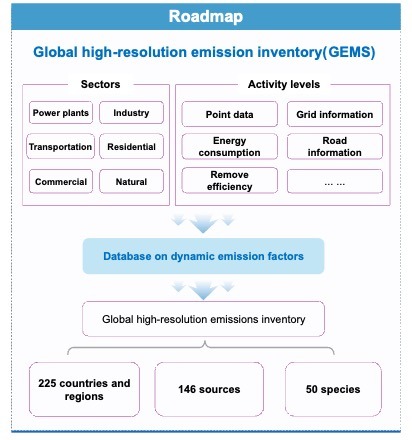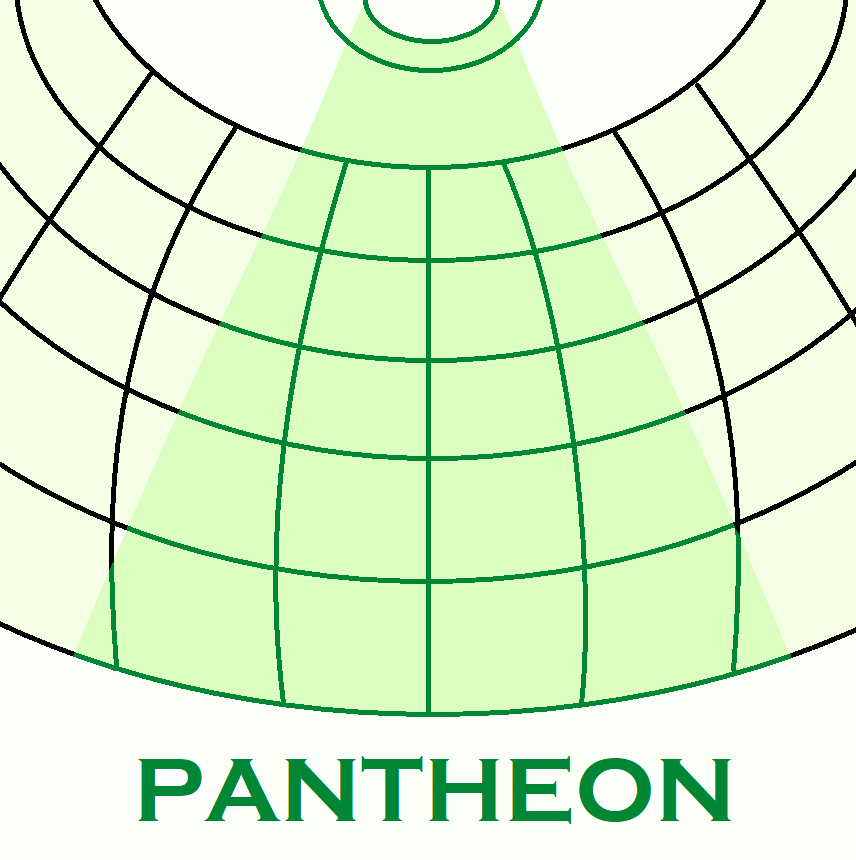Wenjun Meng1, Yafang Cheng1, Huizhong Shen2
1Max Planck Institute for Chemistry Germany
2School of Environmental Science and Engineering, Southern University of Science and Technology
Aerosol Chemistry Department, Max Planck Institute for Chemistry
As part of the PANTHEON project’s effort to support evidence-based pathways toward carbon neutrality, Work Package 1 (WP1) has delivered a foundational dataset: the Global Greenhouse Gas and Short-Lived Air Pollutant Emission Inventory (Deliverable D1.1). This comprehensive, country-level emissions inventory for the year 2018 captures both long-lived greenhouse gases (GHGs) and key short-lived climate pollutants (SLCPs), forming the critical starting point for future modeling, scenario design, and policy assessment within the project.
Why an Emission Inventory Matters
Addressing climate change and air pollution requires robust and transparent data. An accurate emissions inventory is the foundation of scientific modeling and policy development—it identifies where emissions come from, how much is emitted, and by what activities or technologies. D1.1 sets the stage for PANTHEON’s broader goal of mapping net-zero carbon pathways while maximizing co-benefits for health, environment, and the economy.
What the Inventory Includes
Deliverable D1.1 covers emissions of carbon dioxide (CO2), nitrogen oxides (NOx), sulfur dioxide (SO2), carbon monoxide (CO), black carbon (BC), organic carbon (OC), brown carbon (BrC), and particulate matter (PM2.5, PM10, TSP). Emissions are quantified for 225 countries and regions, spanning 146 source categories across major sectors including power generation, industry, transportation, residential and commercial use, agriculture, and natural sources such as wildfires.
Crucially, the inventory integrates detailed technology classifications—for example, differentiating stove types in residential sectors or control technologies in power plants—to reflect variations in efficiency and pollution control. This granularity allows for more accurate modeling of emissions reductions under different mitigation strategies.

Figure 1: Roadmap of Global High-resolution Emission Inventory.
A High-Resolution, Bottom-Up Approach
The inventory is built using a bottom-up methodology. National and international statistics form the backbone of the activity data, which are then linked with technology-specific emission factors. Sources of data include the International Energy Agency (IEA), World Steel Association, U.S. Geological Survey, and fire emissions from Global Fire Emissions Database (GFED).
To ensure high spatial and temporal resolution, emissions are gridded to 0.1° × 0.1° globally and allocated to monthly timeframes using region- and sector-specific seasonal profiles. This level of detail supports sophisticated air quality and climate modeling at both global and local scales.
Transparency, Reproducibility, and Open Access
D1.1 doesn’t just aim for scientific rigor—it prioritizes transparency and accessibility. The full dataset is publicly available via the Zenodo repository under the Creative Commons CC-BY 4.0 license (https://zenodo.org/communities/pantheon_project), ensuring that it can be freely reused with proper attribution. The data is accompanied by comprehensive metadata and documentation, making it easy for both researchers and policymakers to interpret and apply.
Users can explore emissions per pollutant, country, fuel type, and technology, and the data is structured in user-friendly spreadsheet formats. The PANTHEON team encourages derivative research and requests that users share applications to help track project impact.
Laying the Groundwork for Net-Zero Pathways
While D1.1 provides a snapshot of emissions in 2018, it’s more than just a historical dataset. It is the foundational layer for upcoming deliverables, notably D1.2—the Net-Zero Carbon Emission Pathway Assessment Platform—which will model how emissions can evolve under different mitigation scenarios. The current inventory will be updated and refined over the course of the project’s 48-month duration, integrating new data and responding to stakeholder needs.
Collaboration Across Borders and Disciplines
This deliverable is the result of close collaboration between teams at Southern University of Science and Technology (SUST), Max Planck Institute for Chemistry (MPIC), and other project partners. It exemplifies the interdisciplinary and international nature of the PANTHEON project, bringing together expertise in atmospheric science, data engineering, and policy analysis.
Looking Ahead
Deliverable D1.1 demonstrates the power of open science to inform transformative policy action. By establishing a transparent, high-resolution emission baseline, WP1 equips the rest of the PANTHEON consortium—and the broader research and policy community—with the tools needed to evaluate, design, and implement effective pathways to climate neutrality.
Stay tuned as this foundational work feeds into more advanced modeling, scenario evaluation, and policy support tools in the months to come.




